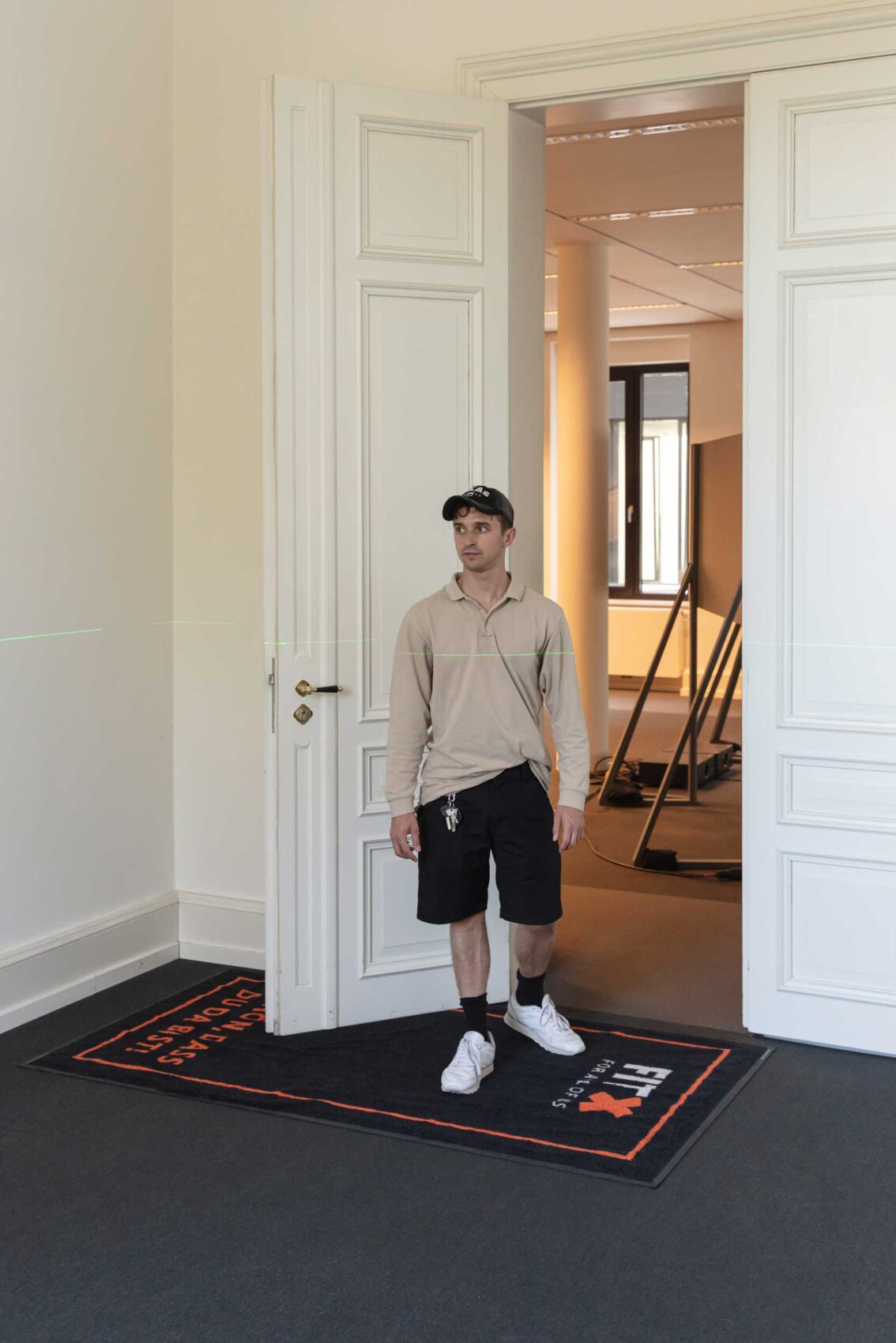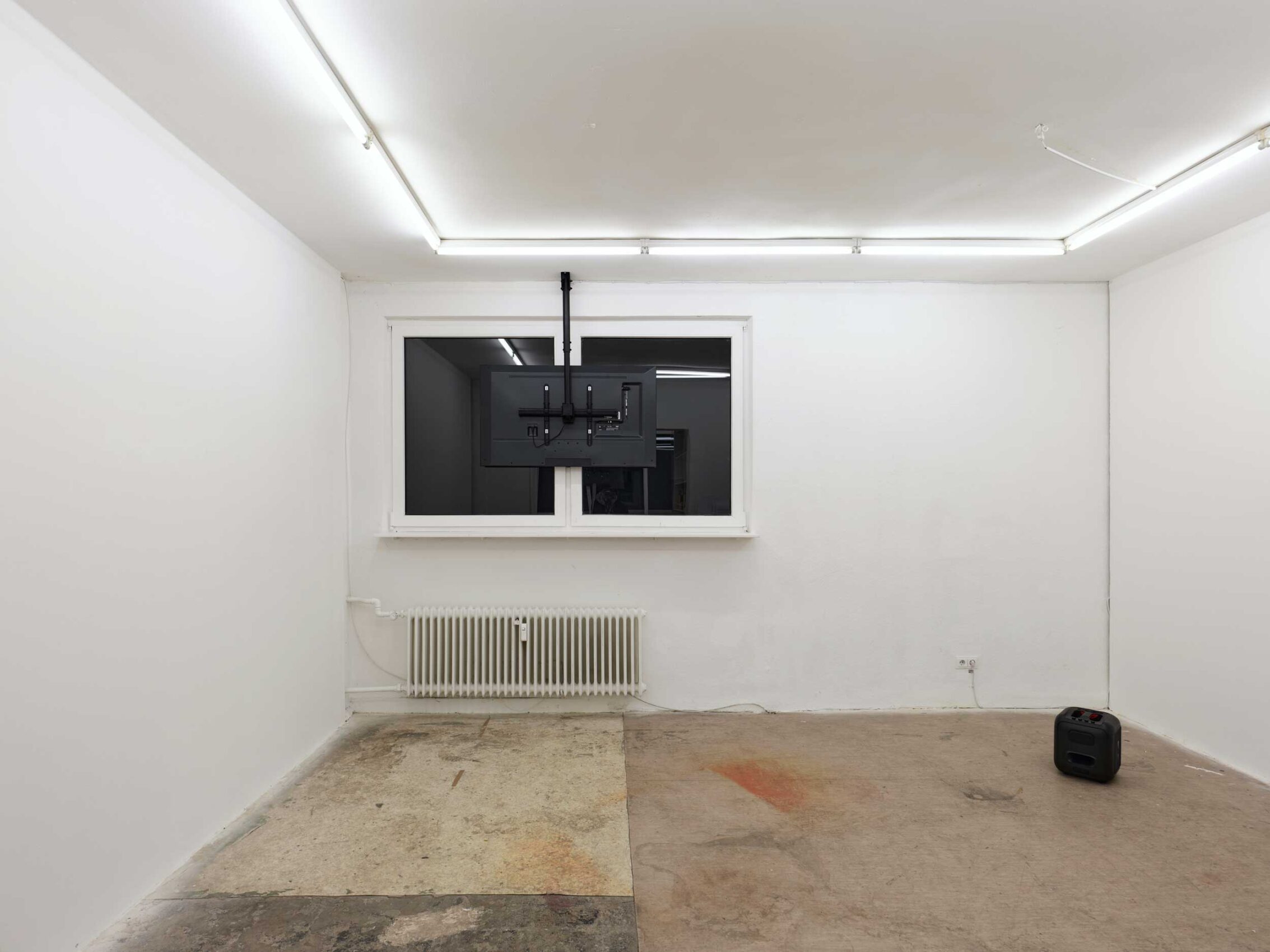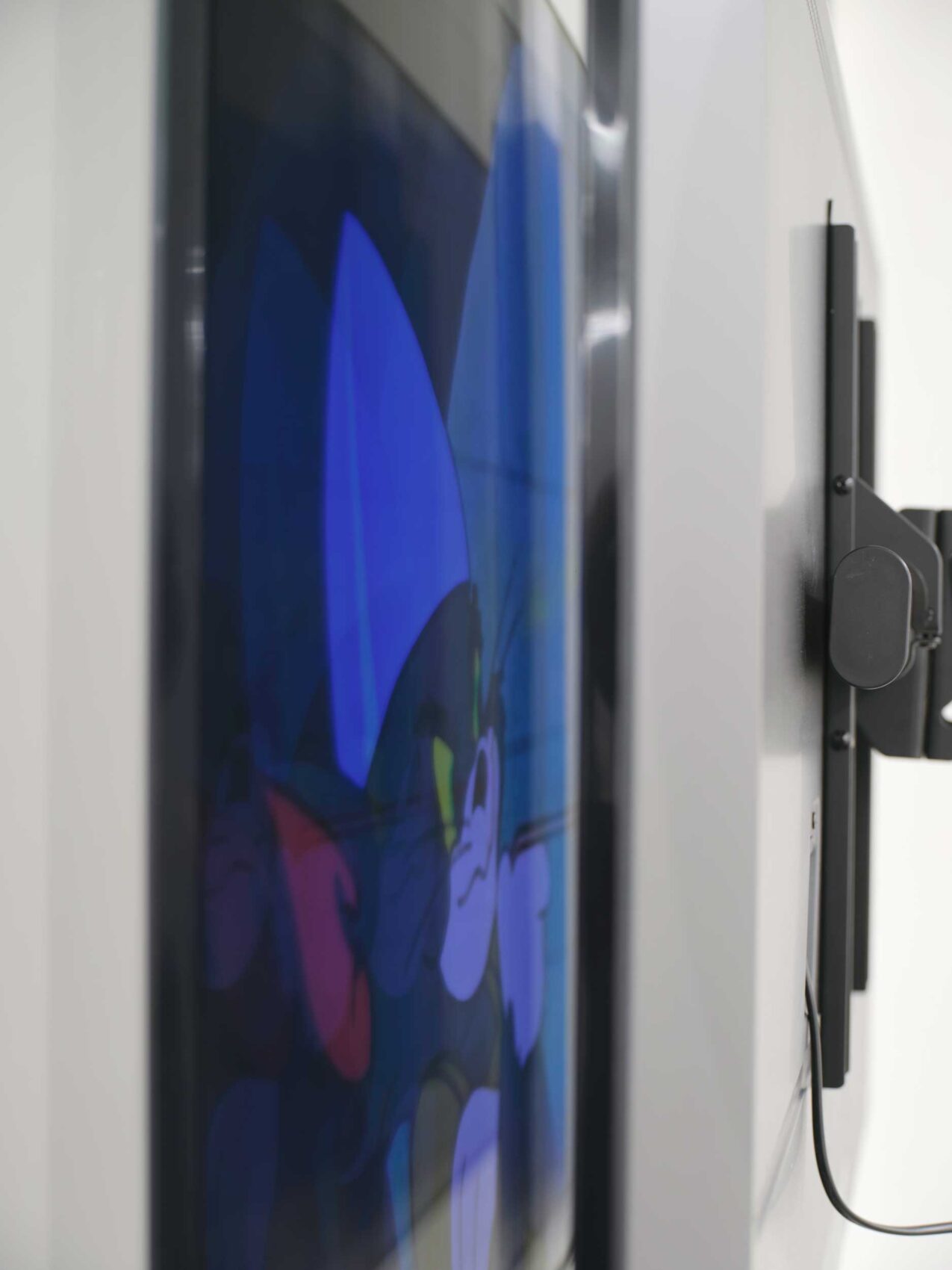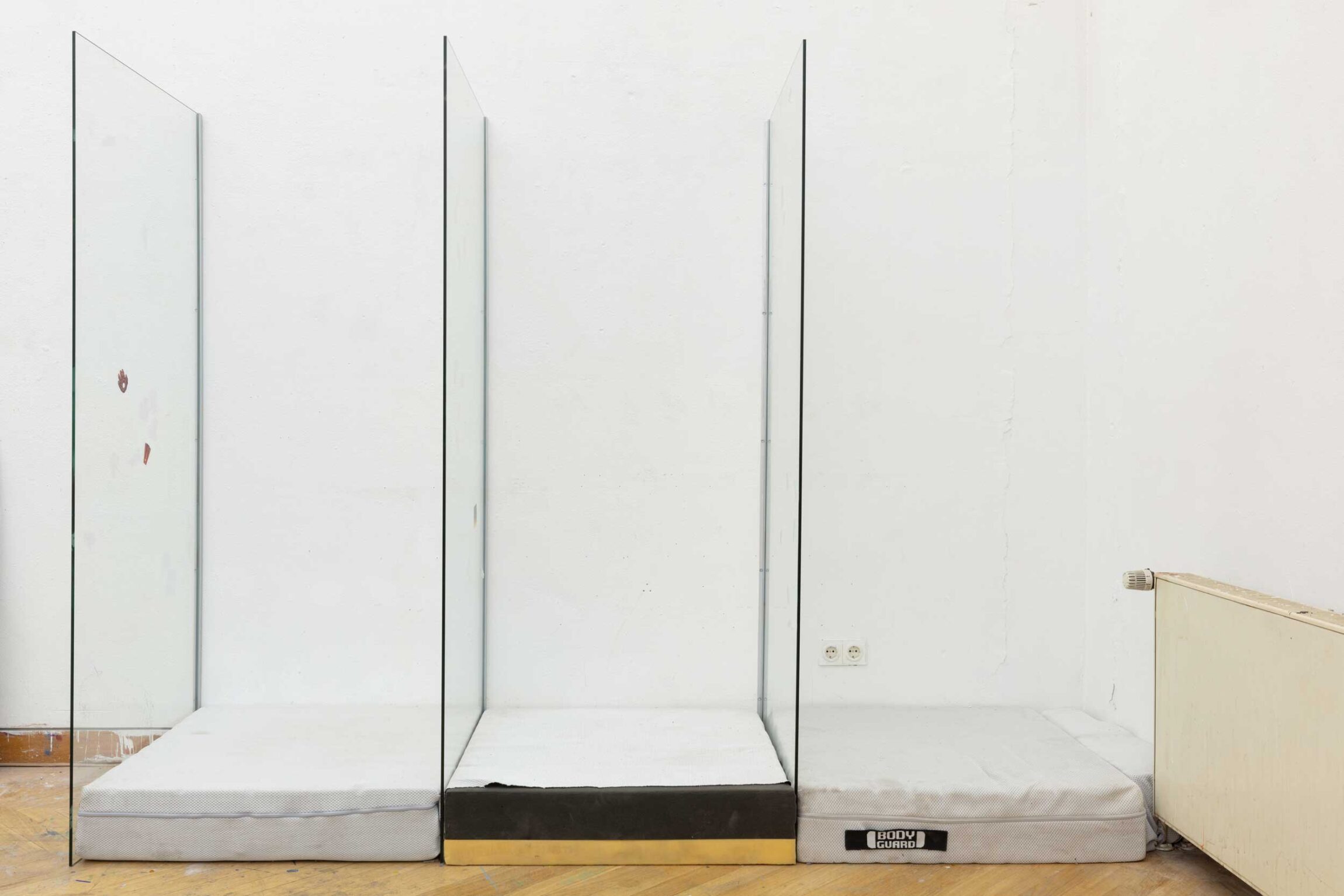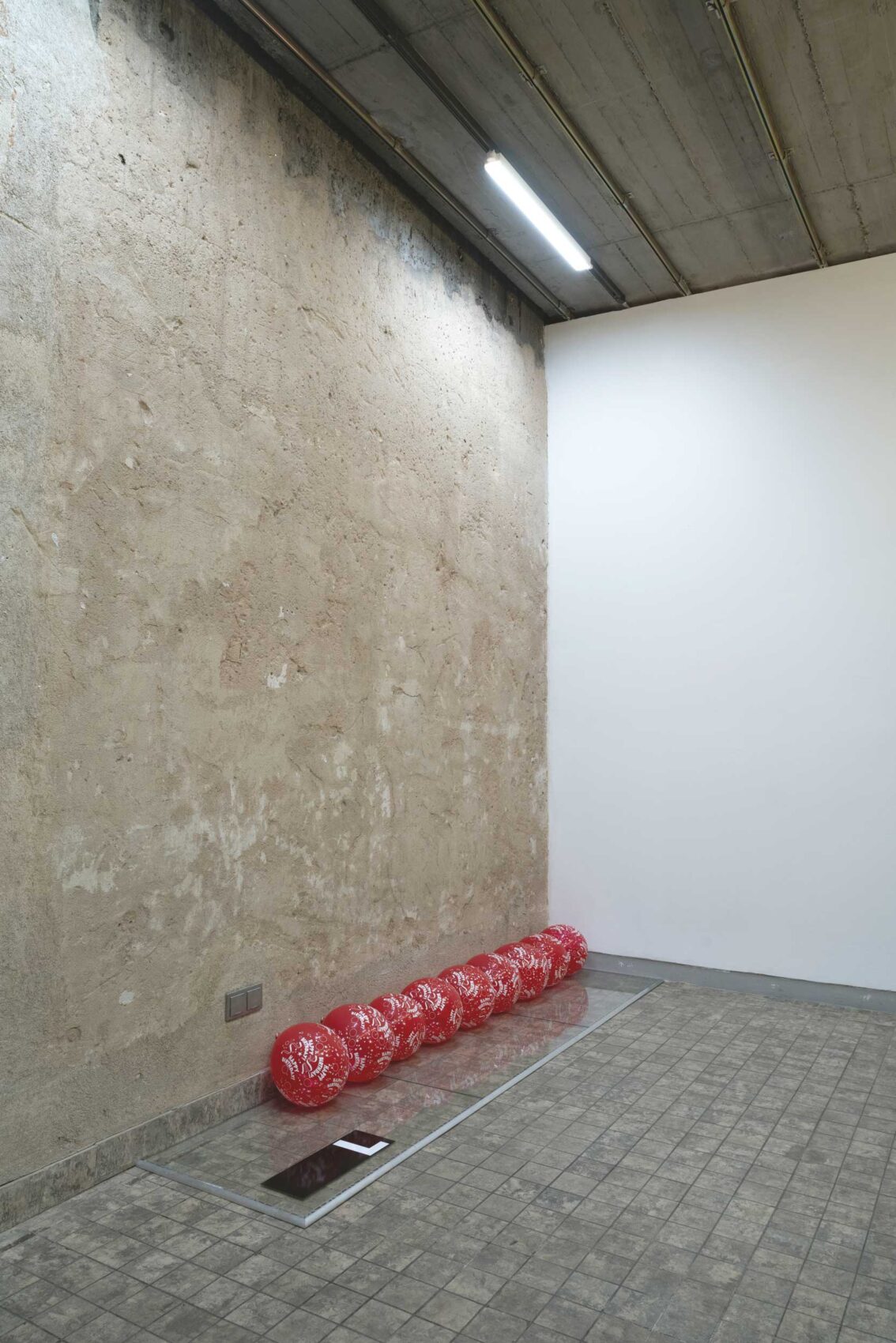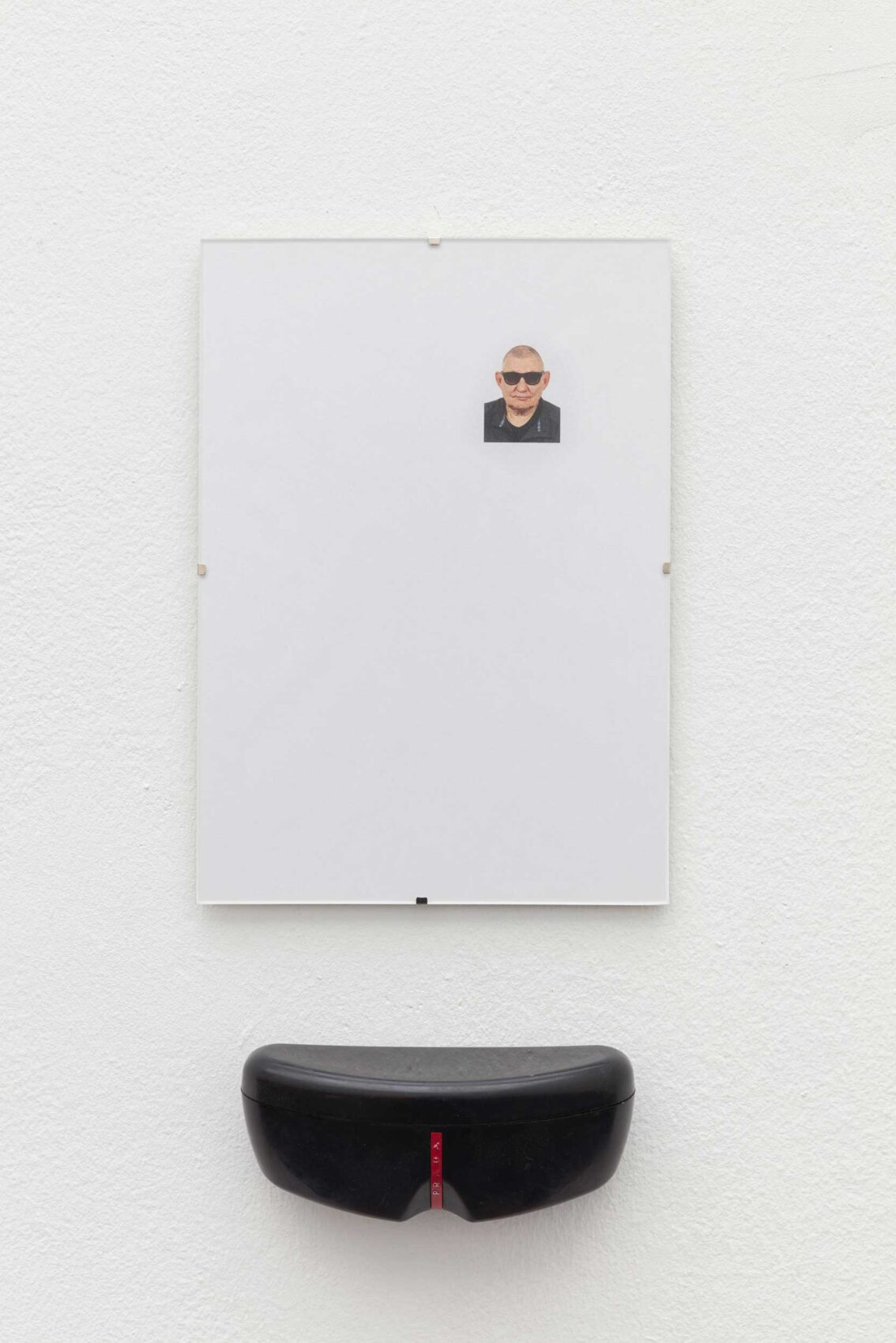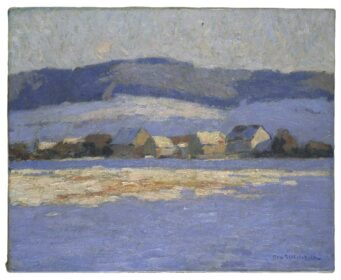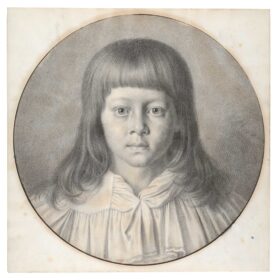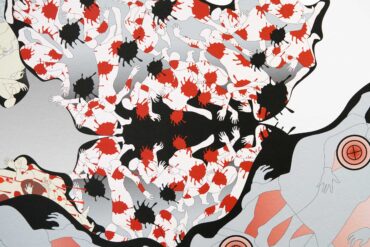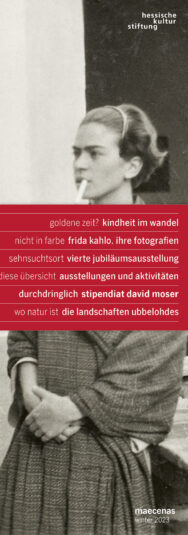Stipendiat David Moser
David Moser was born in Zurich in 1993. From 2014 until 2017, he studied painting at the Kunsthochschule Berlin Weißensee. In 2018, he transferred to Haegue Yang’s class to study installation and sculpture. In 2022, Moser completed his studies at the Städelschule with a master’s degree. The artist currently lives and works in Paris. In his work, Moser often takes himself as the point of departure –– a choice that may seem obvious –– while he is interested merely in the individual as a placeholder, a proxy for the masses, or a mirror of society. Moser creates a cold and sterile aura in order to speak about human possibilities. His particular interest lies in queer and proletarian codes that are embedded in quotidian, standardized objects as well as in mass-produced materials such as sunglasses, mud flaps and door mats, mattresses, flatscreen monitors and stickers as well as building materials such as glass, perforated sheet metal, laser scales, screws, aluminum profiles or scaffolding tubes. All those materials become parts of installations that reveal a failure, a loss or a disparity with regard to psychology and class . Moser’s work focuses on the human and standardized body that remains omnipresent in its absolute absence. It is only in those places where the glass loses its transparency that the mirror image serves as proof of one’s own body still being there. While the artist is committed to narrative, intuition often takes precedence. At the same time ideas prevail over aesthetics. The internet and ever-evolving technologies are used and integrated into the work. Moser uses nature as both subject and material and is committed to a search for temporality in omnipresent mass-produced materials.
David Moser conducted the interview with Raoul Klooker. Klooker is a curator and author and has been co-director of OCTO in Marseille, France, since 2021.
Raoul Klooker You are now halfway through your one-year residency in Paris, so I would like to start by asking what you have been working on over the last few months.
Moser When I arrived in Paris, I didn’t produce anything new for a month because I had just had an exhibition at the Neue Alte Brücke gallery in Frankfurt. I often work with glass and other transparent materials and, while in Frankfurt, had already started to take an interest in perforated sheet metal – the kind that you can see through even though it has a very strong spatial presence. During my studies, I had already considered working with perforated sheeting for my graduation work, but for a long time, I wasn’t satisfied with the results. Back then, I was producing glass tables that could be folded down. Then I came across those cheap plastic rings, produced in China, that you put into holes in the middle of tables to attach parasols to it. I started applying word fragments taken from the newspaper onto the rings. At the moment I’m trying out different ways of integrating these rings into an installation with perforated sheet metal.
Klooker Have you already decided on a format?
Moser Perforated sheeting is being produced worldwide in the standard size of 1m x 2m. That’s why I found it interesting to stick to the standard industrial size, as I did in my work with shower cubicles. I was able to order the panels at a discount from a friend with whom I do sports in Paris and who works as a carpenter at the Hotel de Ville. The panels reminded me of Cady Noland’s sculptures. Noland is an important artist for me –– when I started my studies, she had just had a large exhibition at the MMK Frankfurt. I didn’t know many people in Frankfurt back then, but being a student allowed me to go to the museum for free; I ended up seeing the exhibition dozens of times. Unlike Cady Noland, however, I didn’t want to place my sculptures directly on the floor, but was thinking about leaning them against a wall on an aluminum table. Such a table would also provide space for a box that could contain the rings. I haven’t yet decided how many pre-drilled holes I want to make for the rings in the sheet metal. My idea is that the rings can be exchanged and the work can always be adapted to different exhibition contexts, that it has no subjectivity of its own. The lack of subjectivity is characteristic for my Echo works, which never stand for themselves, but can only be shown together with other works such as Breathing Holes or with the “Happy Birthday“-balloons that contain my breath from the exhibition Quality Gifts.
Klooker How do works like Echos, Breathing Holes or the balloons relate to each other?
Moser The important thing is that these works are always shown with an echo. The echoes consist of black or transparent glass plates, each of them in a standardized size such as XS, L or XL. Their function is to repeat something that is already there, so they cannot exist on their own, although I indicate the Breathing Holes and the Echo or the Balloons and the Echoas separate works. The transparent glass surface of the Echo in the exhibition Quality Gifts at BPA in Cologne also reflected the works above it. I am very interested in power relations and the dynamics that works can have in relation to each other. I am also interested in giving up some of my own subjectivity as an author, or in the fact that a curator can change the works during an exhibition, and that the fragmented words or numbers spoken by the works never make up a whole language and thus can be adapted.
Klooker I noticed that many of the text fragments and symbols that appear in your works, e.g. clothing sizes, brand names such as FitX or Bodyguard, but also materials you use, such as mattresses, shower cubicles and doormats, refer to the human body without representing it.
Moser I think if I had to summarize in one sentence what my work is about, I would indeed say that it is about the body, but about the body in its absolute absence. I am never interested in an image of the body or a body image; the focus usually falls on opaque or sterile materials such as glass or, in this case, perforated sheet metal. At the same time, I try to emphasize the temporal and human aspects of these materials. I am interested in the possibilities that one has as a human being. For example, I made a work in which biometric passport photos appear, but all the people depicted in them are wearing sunglasses and thus elude biometric recording.
Klooker The body in its absolute absence would also be an apt description of your exhibition Corpse and Mirror at the Neue Alte Brücke gallery. How did your installation there come about?
Moser My starting point for the installation was reading The Heterotopias. The Utopian Body by Michel Foucault, a radio lecture he recorded shortly before his death. At one point in the lecture, Foucault describes how mirrors always show us the environment in which we live. However, one can never really enter the environment of the mirror, as it is reserved for our corpses. The exhibition was an attempt to erase image and language, so that the body is still there, while the subject cannot expand.
The main sculptures in the exhibition, Untitled, were two flat screens hanging on opposite sides of the room in front of windows that had been covered with black mirror foil. The screens – mounted to face the windows – showed various excerpts from the Tom and Jerry series in a loop. But those scenes were visible only in the gap between the screen and the window, mirror-inverted in the black mirror. My idea was to insert images into the environment of the mirror, to which our living bodies have no access. Another sculpture in the exhibition was a Bluetooth speaker, connected to one of the monitors and playing the soundtrack of Tom and Jerry. The original Tom and Jerry material features human characters who can talk. For the installation, I edited out all the scenes with people because I was interested in the endless chase and love-hate relationship between Tom and Jerry, like two partners in a toxic relationship who can’t live without each other. Beyond the mirror, there was no language and no images in the exhibition. The front room showed the Breathing Holes, which were drilled directly into the wall and were also reflected in Echo XS.
Klooker Several of your works feature orchestrations of impenetrable barriers. The work Breathing Holes brought up associations about a possible space behind it.
Moser The pattern in which the Breathing Holes are arranged comes from the industrial design of machine-made holes in metal plates, e.g. in subways. I was interested in the idea of there being a machine or a person behind or in the wall. You are talking about something that is not in the room.
Klooker I wondered whether the viewer was in the position of a trapped animal in a box with air holes or whether the holes were drilled for a breathing being on the other side of the wall.
Moser Yes, I like that idea. It could also be interpreted as a connection to neighbors whose strange smells are spreading through the vents in the walls. As in the case of the American mass murderer Jeffrey Dahmer, whose neighbor – long before Dahmer was caught – complained about the smell spreading from his apartment into her living room through such holes.
Klooker Ever since the TV series Black Mirror, black mirrors have become synonyms for digital screens and their dystopian potential. But you also mentioned that you have studied the historical use of black mirrors in painting.
Moser Yes, I’ve read that in Western landscape painting since the 18th century, black pocket mirrors, called “Claude glass“, were used as a tool to break down color gradations in order to make them stand out more clearly as well as to reveallandscape details. In other words, landscapes were painted through the mirror. When using black mirrors in my work, I naturally also thought of smartphones and screens as the black mirrors that reflect ourselves every day, for example when we are sending messages back and forth and suddenly see our own reflection.
Klooker Almost all of your works employ a deliberately generic and impersonal aesthetic of industrially manufactured mass-produced goods. Why do you usually refrain from an individual signature?
Moser That’s my handwriting. [laughs] When people ask me how I define the role of the artist, I realize that I hate the idea of the artist as an outsider or genius or the need for the artist to be a rock star. I am much more interested in default modes of existing , generic products and places like the gym, and I love the idea of being one of many. Maybe ‘basic’ is a good word to describe it.
